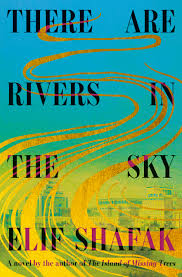Note to the Reader
byNote to the Reader begins with a deeply personal reflection by the author on their maternal grandmother, who, although unaware of Thales of Miletus and his theories, intuitively grasped the essential nature of water as a fundamental force of life. Through the lens of literature, the author’s understanding of water deepens, recognizing it not just as the source of life but also as a symbol of the transformation of landscapes throughout history. This theme of water’s importance is expanded through the lens of the ancient Tigris and Euphrates rivers in Mesopotamia, where once-thriving waters now recede, exposing ancient cities and monuments. The drying of these rivers serves as a stark reminder of the climate crises affecting many nations, highlighting the struggles of civilizations in times of environmental depletion. The metaphor of water’s ebb and flow becomes not just an observation of the physical world but also a broader commentary on the shifting tides of history and human survival.
The narrative transitions to the figure of King Arthur of the Sewers and Slums, a fictionalized character inspired by the real George Smith, a pioneering Assyriologist who, through self-study, unlocked the secrets of cuneiform and uncovered the Epic of Gilgamesh. This homage to Smith and other scholars is underscored by the author’s extensive research, weaving together references to significant works such as The Buried Book by David Damrosch and The Ark before Noah by Irving Finkel. These scholarly contributions not only illuminate the literal and metaphorical importance of water in human history but also trace how water has been both revered and feared throughout various cultures. Smith’s work, in particular, serves as a powerful example of how one individual’s quest for knowledge can open a floodgate of understanding that transcends time and place, reshaping how we interpret the ancient world and its complex relationship with water.
As the chapter progresses, the author weaves in various historical events and figures, shedding light on the tragic and often violent history of the Yazidi people. The Yazidis, a minority group with a rich cultural heritage, have faced centuries of persecution, including genocide, which is woven into the larger narrative of water’s role in the human experience. The author emphasizes the complexity of their relationship with the Yazidis, illustrating how their struggle for survival and recognition is not merely a historical footnote but a poignant reminder of ongoing human rights abuses in the world. This larger conversation about human suffering and resilience is framed within the context of water’s transformative power—how it sustains and nurtures, yet how it can also become a symbol of destruction when misused or withheld. By linking the struggles of marginalized communities to the flow of water, the author underscores the interconnections between environmental and cultural narratives, showing how both are essential to understanding humanity’s shared history.
The chapter closes with the author’s heartfelt gratitude to the scholars, survivors, and others whose lives and work inform the narrative. Their resilience, stories, and experiences are woven into the tapestry of history, creating a deep connection that transcends generations. This is echoed in the final imagery of Thales observing water, a symbol of the continuity of life across time. The author’s reflection on the simplicity of a single droplet of water ties together the book’s themes of interconnectedness and the importance of understanding our shared history. This universal element, water, connects all humans, past and present, highlighting the timeless nature of our collective experiences. Through this reflection, the author calls the reader to recognize the weight of cultural narratives and their power to shape the world, reminding us all of the flow of time and the enduring force that binds us together.

